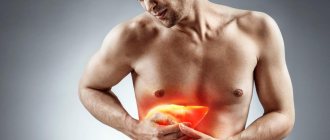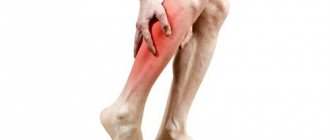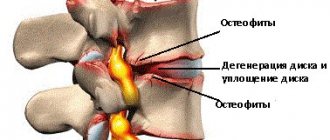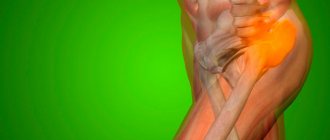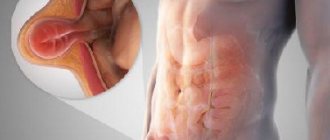Cramps are involuntary single contractions of a muscle or an entire group of muscles. Depending on the duration of seizures, they are divided into tonic (long-term) and clonic (short-term).
Almost everyone has seizures. For children under four years of age, such seizures are normal. In most cases, these seizures do not cause significant harm to the child.
Typically, seizures in children last no more than two to three minutes. If your child has a seizure, try not to worry and follow these steps carefully:
- lay the baby on a flat horizontal surface and turn his head slightly to one side;
- loosen the collar on your clothes, unbutton the top buttons of your shirt - nothing should tighten your throat;
- To prevent the child from choking, hold his tongue with a handkerchief or napkin;
- if the baby has a convulsive attack with vomiting, do not interfere with it;
- do not squeeze the child in an attempt to stop the trembling;
- are near the child at the time of convulsions;
After the attack ends, you should call a doctor or an ambulance. You should not hesitate, especially if the attack was severe.
What are the causes of seizures
This condition can occur in both sick and completely healthy people. Muscle contraction can be local or generalized, when entire muscle groups are affected. In children, such convulsions occur at high temperatures, and in adults, such a condition is a sign of a serious disease of the nervous system.
Among the causes of seizures:
- Deficiency of certain vitamins and microelements, most often calcium or magnesium;
- Sedentary lifestyle or too intense exercise;
- Pregnancy and accompanying changes in the female body;
- Taking certain medications that remove potassium salts from the body;
- Various diseases, including diabetes, varicose veins, excess body weight and flat feet.
If you are concerned about frequent limb cramps, contact a specialist who will find out the cause of the unpleasant phenomena.
When do you need to see a doctor urgently?
If your hands or fingers are cramped, you should seek medical help when this condition does not go away for a long time - 4 hours or more.
You should also urgently visit a specialist if you have ascending cramps that started in the legs and then moved to the arms.
Sometimes a cramp in the left arm can be a sign of a heart attack. In this case, the patient may lose consciousness. The reason lies in heart rhythm disturbances of varying intensity: from ventricular tachycardia to complete AV block. In addition, in a patient during this period, convulsions can be provoked by neurological disorders, but a similar situation is observed during a heart attack not often, in approximately 3-4% of cases. Acute chest pain and a drop in blood pressure come to the fore. If you suspect a heart attack, you should seek emergency medical help.
Transient seizures require consultation with a doctor, but emergency treatment can be delayed.
How to prevent seizures?
There is a way to prevent seizures if you understand the risk of their occurrence and the cause that can lead to it. For example, if you have flat feet, it is important to choose the right shoes and use orthopedic insoles. For varicose veins, avoid excessive physical activity. During pregnancy, follow the regime and take the necessary vitamins. In any case, if you want to avoid night cramps, you need to adjust your diet to include foods rich in potassium, calcium and magnesium. Instead of sweets, give preference to dried apricots and dates.
I want to get rid of these symptoms as quickly as possible. As a rule, muscle pain appears as a result of physical activity. But is this always the case? When is pain just a harmless physiological phenomenon, and when is it a sign of illness?
Muscle spasms
Muscle spasms are the most common cause of muscle pain. Muscle spasms can develop for various reasons. It develops acutely or over a long period of time with chronic overexertion. In this case, the pain can be dull, aching or, on the contrary, stabbing. It can last a few seconds or be protracted.
The most common reasons that lead to persistent muscle spasms:
- Prolonged muscle strain due to an uncomfortable position in which a person works. This is precisely the nature of back and neck pain among many office workers, leg pain among teachers and salespeople, hairdressers, and surgeons.
- Injuries as a response when muscles are forced to overstrain.
- Incorrect posture - as a result of this, certain muscle groups are constantly under heavy load and they are overstrained.
- Carrying a bag on one shoulder, and other asymmetrical physical activity.
- Hypothermia (fans, air conditioners and other cold air flows).
To get rid of the above unpleasant sensations, you first need to eliminate the causative factor. The next step should be rest, excluding additional physical activity and the use of warming ointments. In some cases, massage will be helpful. However, it should be said that sometimes it is easier to warn and be prepared for physical activity; for this you need to first perform warm-up exercises, or use ointment, elastic bandages, belts, bandages.
Lack of substances
Unpleasant sensations in the muscles can be caused by reasons that a person is not even aware of. Who would think that his arms and legs hurt because there is a lack of potassium or calcium salts in his body?
However, this is a very common reason. The most unpleasant thing is that a lack of potassium can cause discomfort in the heart, because the heart is the same muscle. A person goes to doctors, undergoes electrocardiographic and other examinations. And he does not agree that the doctor prescribed him (in his opinion) a frivolous treatment - “vitamins”. Distrust of the doctor and refusal to take the prescribed drug will exclude the opportunity to obtain the necessary complex of minerals, establish electrolyte balance, and will not contribute to healing.
Calcium deficiency develops for various reasons. Very often during periods of rapid growth of the body, during pregnancy during periods of hormonal changes in the body and especially in older people. Osteoporosis is a more catastrophic and later consequence of calcium deficiency. The harbingers are a banal aching, periodic muscle pain.
Mineral deficiency can be directly related to both lack of dietary intake, as well as as a result of forced metabolism (breakdown) in athletes and those who like to push themselves in a fitness club, irregular intense physical labor, adherence to various kinds of diets (refusal to eat), with the goal is to lose weight.
This explains the way to get rid of the problem. Seek advice from a doctor and, if necessary, undergo the necessary examination to confirm or refute the suspected deficiency of substances. Thus, uncontrolled use of drugs can lead to an increased content of minerals, and sometimes this is worse than their deficiency (especially for potassium) and most often it is enough to limit yourself to eating foods rich in certain substances without resorting to taking medications.
Myositis
Painful sensations in the muscles that increase with movement can be caused by myositis. Myositis is inflammation of muscle tissue. At the same time, the pain is aching, occurring in the arms, legs, and muscles of the torso. Sometimes when palpating the muscle, you can feel nodules or cords. Myositis occurs for various reasons. It appears as a result of injuries, muscle strain, as a complication after viral diseases, or a cold. Some parasites, such as Trichinella, also cause myositis. At the same time, fever may develop with parasitic myositis.
The nature of myositis should be clarified by a doctor. And only after that start treatment.
Fibromyalgia
(a condition of the body caused by constant and sometimes debilitating muscle pain).
Such pains are common - some doctors even claim that 75% of people have experienced them in one way or another. Most often, fibromyalgia affects the muscles of the shoulders, chest, neck, back of the head, lower back, and hips. And also often these aching pains cause restlessness at night and insomnia. The main difference between fibromyalgia is that the pain is distributed throughout the muscles and is associated with the act of movement, inhalation and exhalation. By pressing in areas of discomfort, you can even find the most painful points. The pain is diffuse - that is, it can appear and disappear in one place and flow to other areas of the muscles. A special place is occupied by the so-called “intercostal” fibromyolgia (neuralgia), which imitates pain in the chest and requires differentiation and cordiolgia (heart pain), which may hide a serious pathology.
Fibromyalgia can be caused by nervous and physical stress, frequent stress, injury, lack of sleep, emotional stress, exposure to cold or dampness, rheumatic and autoimmune diseases. It is interesting that most often nervous and suspicious young women and teenage girls suffer from fibromyalgia. It's enough to be nervous before exams. But in men, fibromyalgia more often occurs due to nervous or physical stress. Hard workouts or pressure at work are the main reasons for men.
Treatment of fibromyalgia on one side can be limited to taking valerian. On the other hand, it may require a more serious approach to treatment using rubbing ointments and tablet and injection forms of non-steroidal anti-inflammatory drugs, and correction of physical activity.
Colds, flu and other infectious diseases
Many infectious diseases (one could say almost all!) are accompanied by the appearance of muscle pain. This is explained by the fact that pathogenic microorganisms and viruses, during their vital activity in our body, cause its poisoning - intoxication of the body. And with intoxication, muscle pain of varying intensity occurs. The more severe the cold, the more your body muscles may ache.
It is usually difficult to confuse muscle pain caused by infections, viruses, and others. After all, the symptoms of the disease itself are obvious: fever, chills, weakness.
And the main treatment is treatment of the disease itself: lowering body temperature, taking antiviral drugs, immunomodulators, vitamins, anti-inflammatory drugs, drinking plenty of fluids and other therapeutic measures that help remove toxic substances from the body that cause intoxication. However, the appearance of pain in simple forms of a cold can manifest itself as other concomitant diseases and complications. For example, pain in the chest area may indicate the onset of complications - bronchitis, pleurisy, pneumonia and other serious illnesses.
Pain after exercise
The most common muscle pain. It appears after physical activity. Its nature is as follows: during work, the muscle produces lactic acid, which is a product of the metabolic metabolism of the working muscle. The more intense the workout, the more lactic acid is produced. It irritates the nerve endings in the muscles and causes a burning sensation. This process is determined by physiology and is necessary for the body: acid accelerates muscle regeneration and restoration and destroys free radicals.
Lactic acid is gradually removed from the muscle through the bloodstream. To speed up this process, it is necessary to resort to adequate rehydration (flooding).
In untrained people and under unusual or very heavy loads, muscle pain after exercise is caused not only by lactic acid, but also by microscopic injuries to the muscle fibers. Small wounds appear in the muscles, which causes pain hours and days after exercise. In principle, this is also not a pathology for the body: the released hormones activate the healing processes and functioning of the body, accelerate the metabolism of proteins and ultimately lead to the regeneration of muscle tissue. This is what athletes want to achieve through training. Negative consequences occur when there are too many microtraumas. Then the muscles are depleted rather than growing, since the regenerative possibilities are also not endless.
Calf muscle cramps
Many people have experienced leg cramps at least once in their lives. Often the muscles of the feet, fingers, and calves cramp. From a physiological point of view, cramps are sudden contractions and spasms of muscles caused by poor circulation or physical stress. A common cause of cramps can be poor movement or monotonous, repetitive movements. Such cramps develop in people who work a lot on the computer or play with a computer mouse, work on their legs, or train intensively.
Night cramps can be caused by problems with blood circulation and lack of calcium.
Frequent seizures can be caused by metabolic disorders and various endocrine disorders.
If seizures recur frequently, you should consult a doctor and find out the cause of their occurrence. If the culprit is just muscle overstrain and salt deficiency, then it’s enough to simply normalize your diet and stop putting too much strain on your muscles.
Pain and cramps are always an indicator that the body does not like something. Most often, eliminating their causes does not present any difficulties. Enough rest and good nutrition.
Be healthy!
Assistant at the Department of Anesthesiology, Intensive Care and Emergency Medical Care, Leningrad State Medical University named after. St. Luke" Sergey Oberemok
Treatment of night cramps
Seizures can be a sign of the development of serious diseases; it is extremely important to diagnose them in a timely manner. Depending on the cause, appropriate treatment is selected. In any case, you can reduce the risk of painful leg cramps by practicing daily contrast showers. In addition, it is important to change your diet. Include foods rich in potassium, calcium and magnesium, reduce the amount of carbohydrates and fats that interfere with the absorption of beneficial microelements.
In most cases, frequent calf cramps go away if you balance your diet and begin to engage in moderate physical activity.
You can consult about the causes of seizures and make an appointment with a specialist by calling our clinic or using the form on the website.
FIND OUT PRICES
What muscles can cramp and why?
Muscle spasms are the most common. They can occur in any part of the body, but usually affect:
- Legs
- Hands
- Hands
- Hips
- Abdomen
- Intercostal muscles
Muscle pain, fatigue and overuse are the most common causes of muscle spasms. Other causes include stress, which can lead to twitching of facial muscles. Pinched nerves can cause back spasms.
If a muscle spasm is caused by a neurological condition, the person will usually experience other symptoms. These may include:
- Pain in the back, neck or head
- Muscle weakness
- Numbness of the skin
- Tremor
- Paralysis
- Coordination problems
- Lethargy
- Visual impairment
- Sleep problems
Who most often experiences muscle cramps?
Some people are more vulnerable to muscle spasms than others. Those most at risk are:
- Aged people
- Athletes
- People who are overweight or obese
- Pregnant women
- People with certain medical conditions, such as nervous disorders or thyroid problems
Muscle spasms are usually nothing to worry about, but in some cases they can be a sign of a neurological disorder. Neurological diseases affect the brain, which tells muscles to contract and relax.
